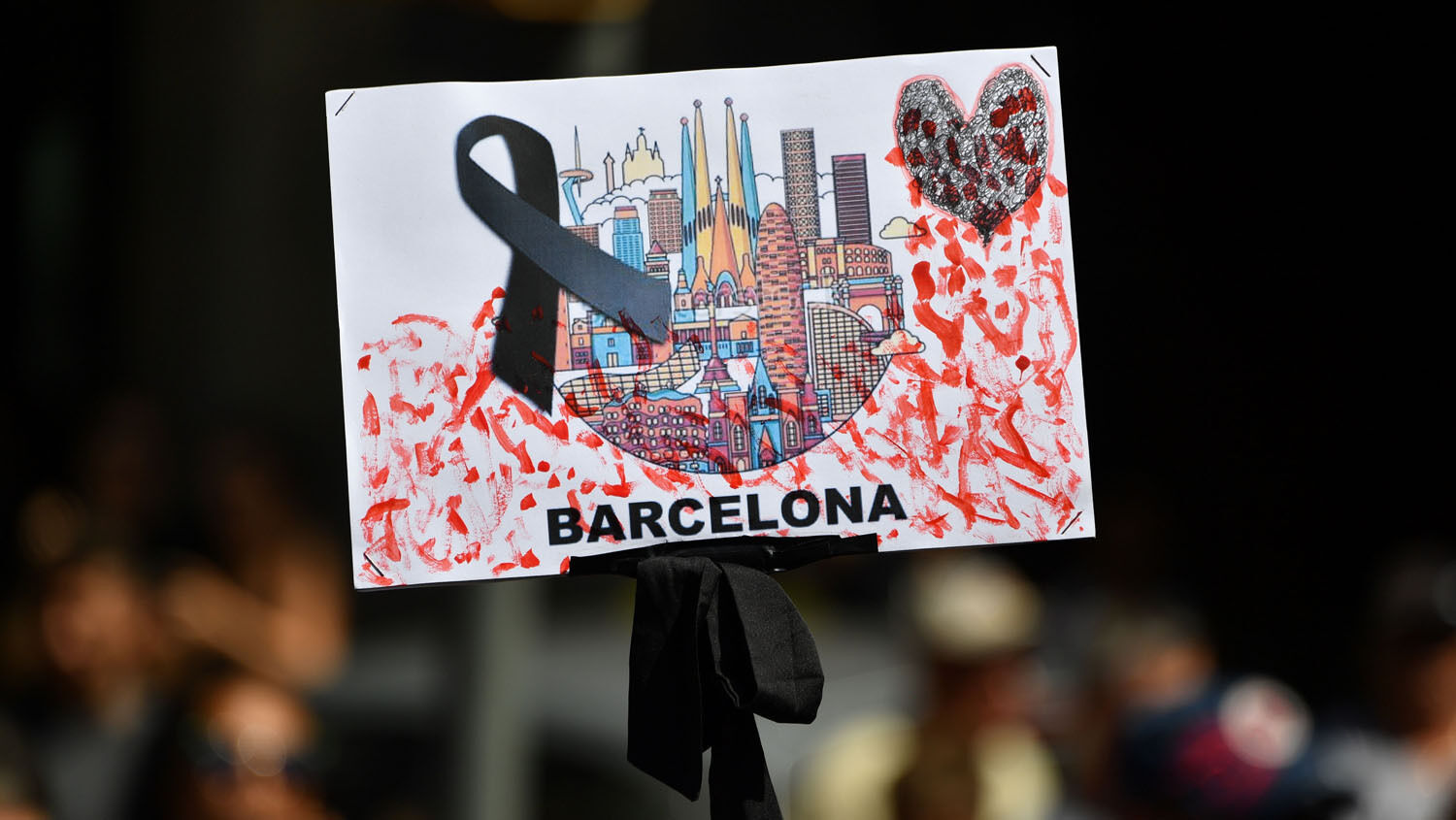
Terrorist Attacks in Spain Shake Europe
Spanish police are on high alert after two vehicle attacks within 12 hours killed more than a dozen people and injured more than 100 others.
At 5 p.m. on Thursday, a van hurtled through crowds of tourists and residents on Barcelona’s popular Las Ramblas boulevard, killing 13 people and injuring over 100. A witness reported that the driver drove in a zig-zag pattern to hit as many people as possible before he fled the scene on foot.
On Friday at around 1 a.m., five alleged terrorists carried out a second attack in Cambrils, a popular seaside town about 75 miles south of Barcelona. The men drove a car into crowds of people, injuring seven before the car flipped over. Police officers then shot the five men, who were wearing what appeared to be explosive suicide belts. A woman injured in the attack has since died.
Spanish police say that the two attacks are connected, possibly carried out by a single terrorist cell. Through its Amaq News Agency, the Islamic State quickly claimed that the Barcelona terrorists were “soldiers of the Islamic State.”
In Berlin, London, Stockholm, Paris and now Spain, terrorists have resorted to weaponizing vehicles. These attacks are not new, despite cnn anchor Wolf Blitzer’s attempt to connect the Barcelona attack with the events of last Saturday in Charlottesville, Virginia.
In November of last year, the Islamic State-sponsored online magazine, Rumiyah, encouraged its followers to consider using vehicles to mow down “infidels.” Vehicles are easy to obtain and can cause terrible carnage, even more so than a knife attack or a suicide vest. The article showed how to use trucks “in a premeditated manner” to inflict “large numbers of casualties.”
Europeans are worried about the increasing threat of Islamic terror. They are also worried about rising immigration. Two of the suspects are reported to be Moroccan. It is not yet clear if these attacks were launched by recent migrants, but many others attacks in Europe have been.
The day before the attack, the Gatestone Institute reported that Spain is about to replace Greece as the second-largest gateway for migrants entering Europe by sea. According to the International Organization for Migration, three times as many illegal migrants have reached Spain from January through July 2017 than in all of 2016. Europe’s migrant crisis is out of control, and Europe’s leaders have no solutions.
This latest attack is just one more in a series of events that is causing Europeans to question their current leadership. Despite so many of these vehicle attacks, no European leader has really done anything. Spanish Prime Minister Mariano Rajoy said that terrorism is “Europe’s main problem right now.”
As the Trumpet emphasized in March 2016, “The migrant crisis is creating a desire for a strong leader.” This magazine has been warning for years that Europe’s mounting problems will lead to the rise of a strongman—a leader who was actually prophesied thousands of years ago in the Bible (Daniel 8). As Trumpet editor in chief Gerald Flurry wrote in the November 2015 edition: “Now, Europe’s refugee crisis is bringing this question to the forefront, a question Herbert W. Armstrong first asked more than 80 years ago: Who will be the strongman of Europe? Europe clearly needs a leader with vision, a leader able to confront these epic problems.”
With terrorism only increasing and the migrant crisis continuing with no end in sight, Europe is beginning to cry out for such a leader. Each new attack will make this cry louder and louder.
